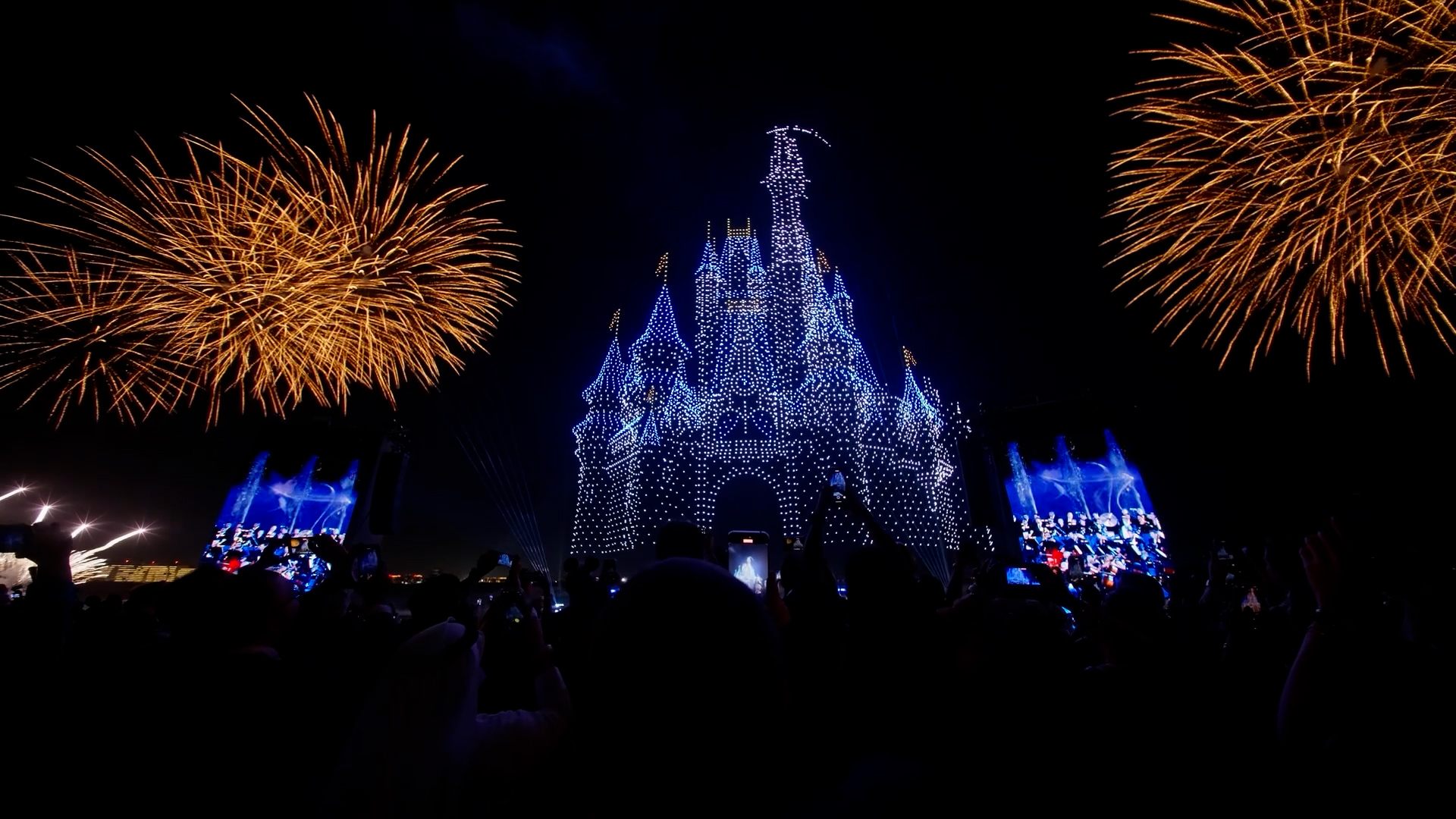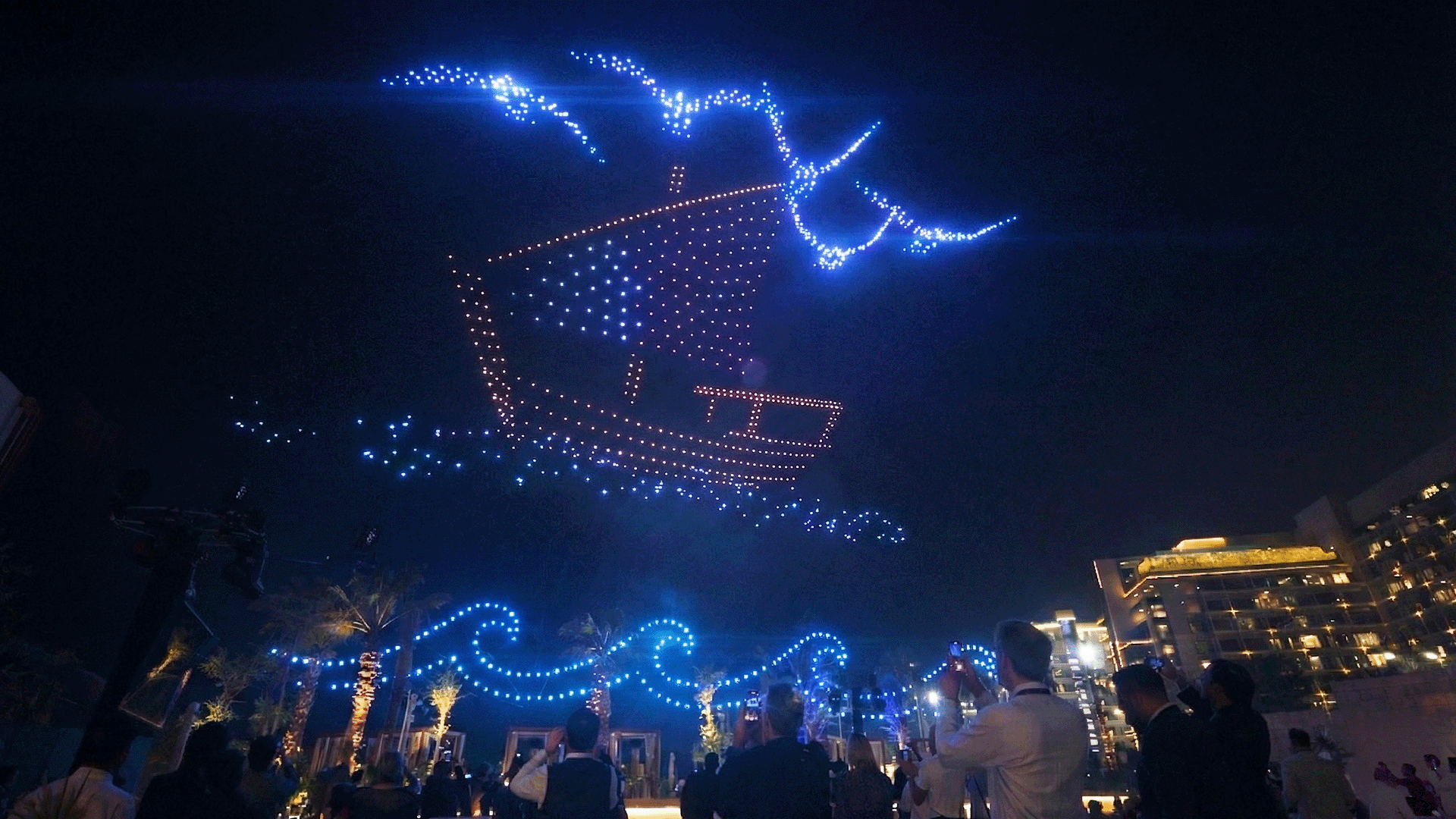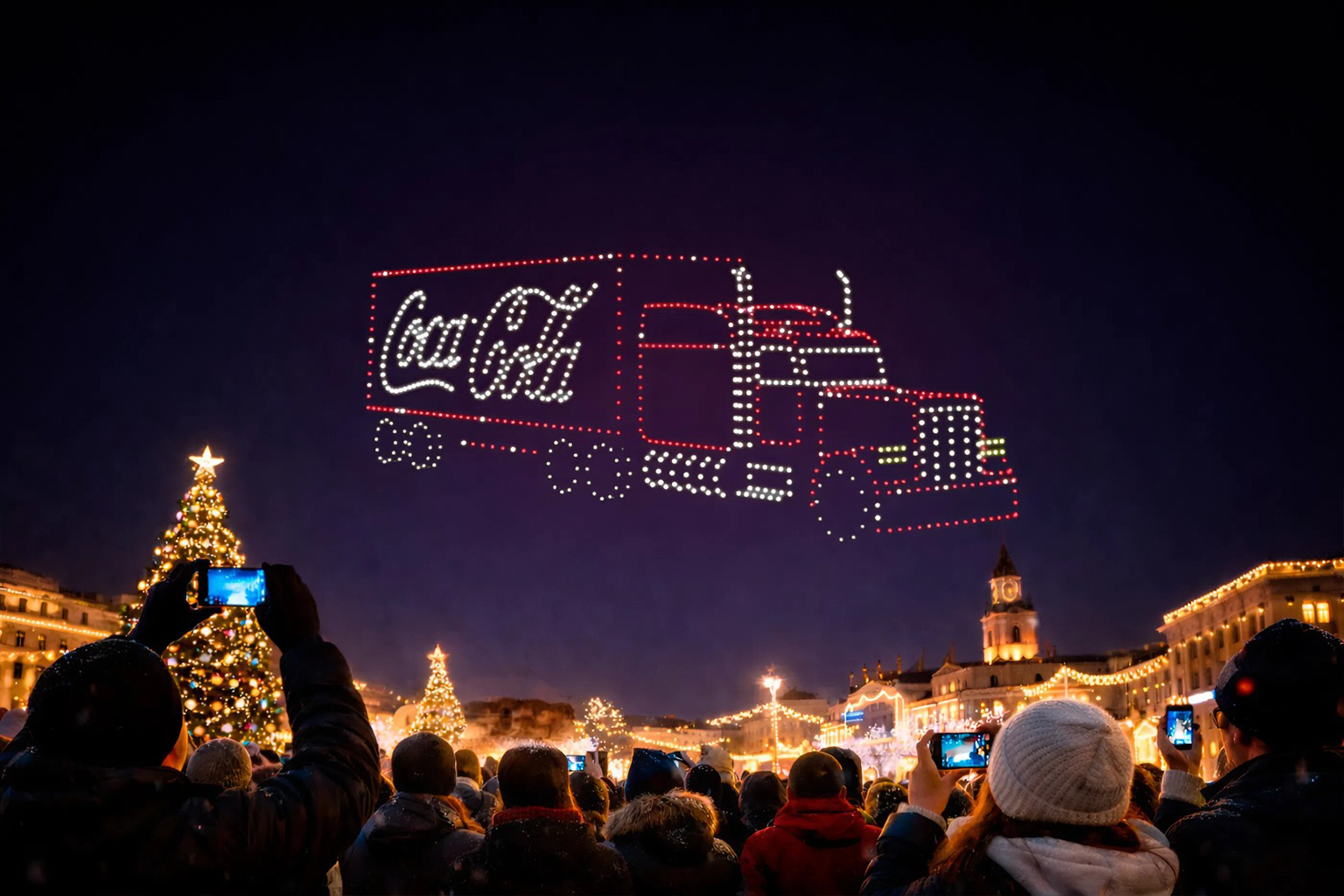Spectacles should never come with risks.
Drone light shows redefine spectacle ー but only through meticulous planning, strict regulations, and advanced safety measures. All to ensure the complete safety of both the audience and the environment.
This guide covers what every event organizer must know to safely deliver a drone operation — from current regulations to pyro drone flight path management and weather protocols.
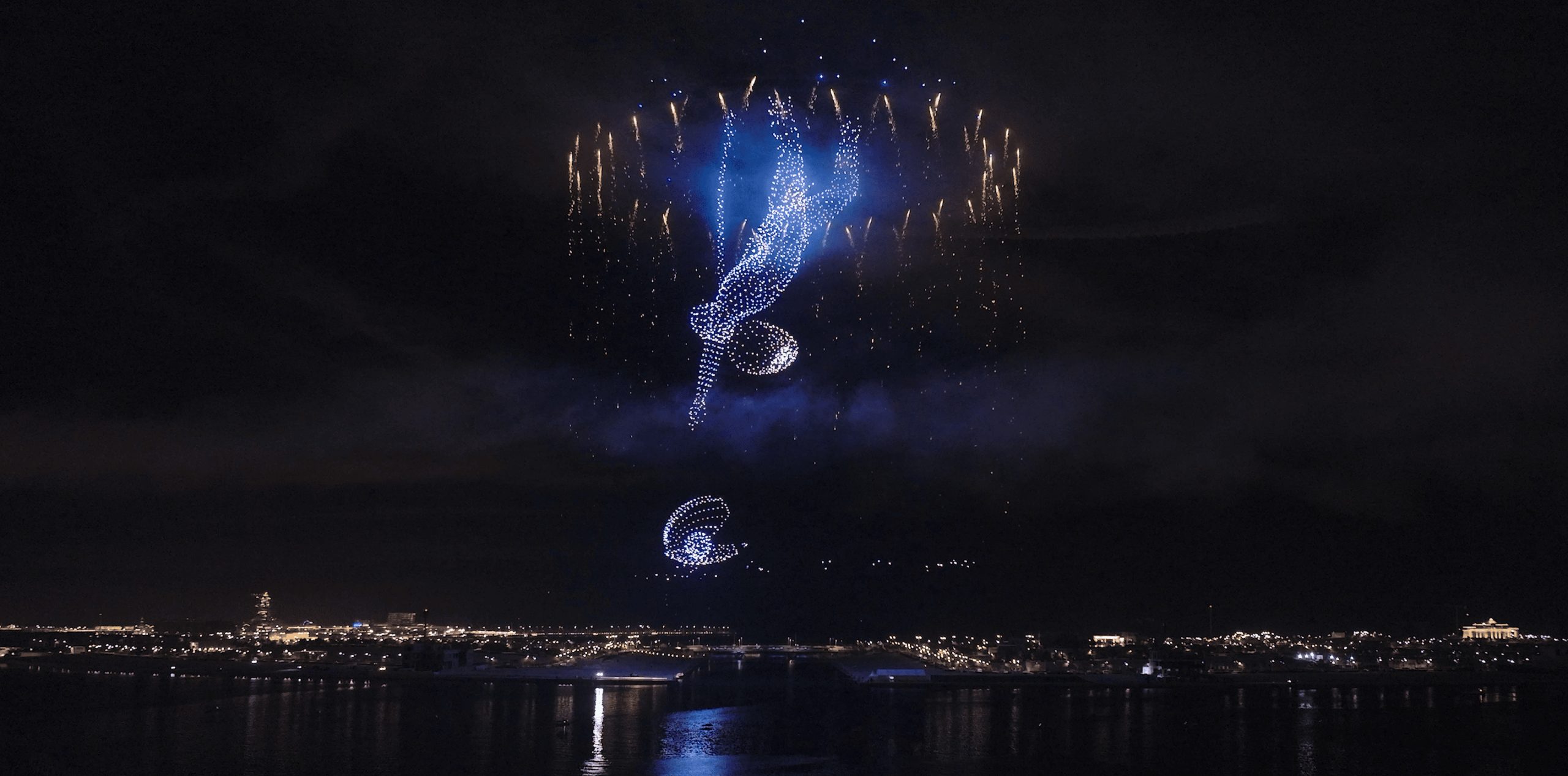
Why Safety and Regulations Are Critical in Drone Shows
Drone shows use dozens, sometimes thousands, of drones to create synchronized patterns in the night sky. To ensure aviation safety during this experience, regulatory authorities around the world set strict regulations governing every show. Namely, compliance with aviation laws and essential safety procedures.
Drones do not pose risks associated with fireworks: wildfire, debris, airspace violations, or the risk of uncontrolled explosions. Yet, they pose other risks linked to false navigation or failure to maintain a safe zone. Like during the show in Orlando, USA, when a drone pilot error led to an injury, or during a massive drone fall at the event in China.
Even minor deviation from protocols can threaten drone light show safety. Learn how to not let that happen.
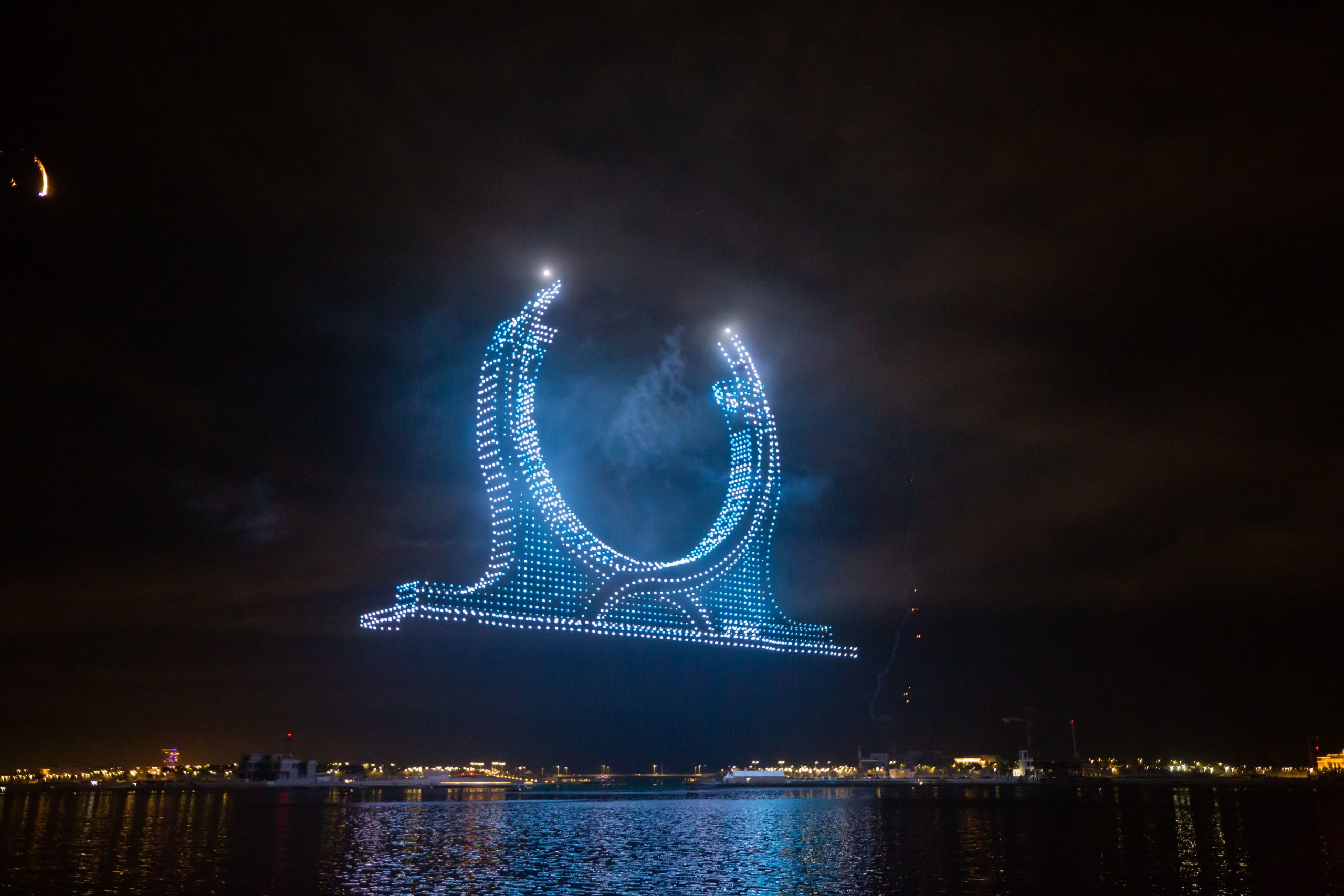
Step 1: Understanding Drone Regulations
Authorization and Permits
Every flight must be agreed in advance. In most countries, authorization is granted by civil aviation authorities, and the process usually takes 2 to 4 weeks. Depending on the location, additional approvals may be required from the police, military, or border security agencies.
Altitude and Airspace Restrictions
Each country sets its own flight height limits. Normally, the maximum is 120 meters, but with special authorization, shows can fly at 300 meters.
At international borders or near airspace corridors, strict show regulations apply. It often requires direct coordination with defense or aviation agencies.
No-Fly Zones and Geofencing
If there is a single person or roads below the show — that’s an automatic no-fly zone for drones. Flight control systems and geofencing (virtual safe zone) ensure drones cannot enter prohibited areas, maintaining complete safety for spectators and infrastructure.
This is especially critical for large-scale events where spectators spread out across a wide area.
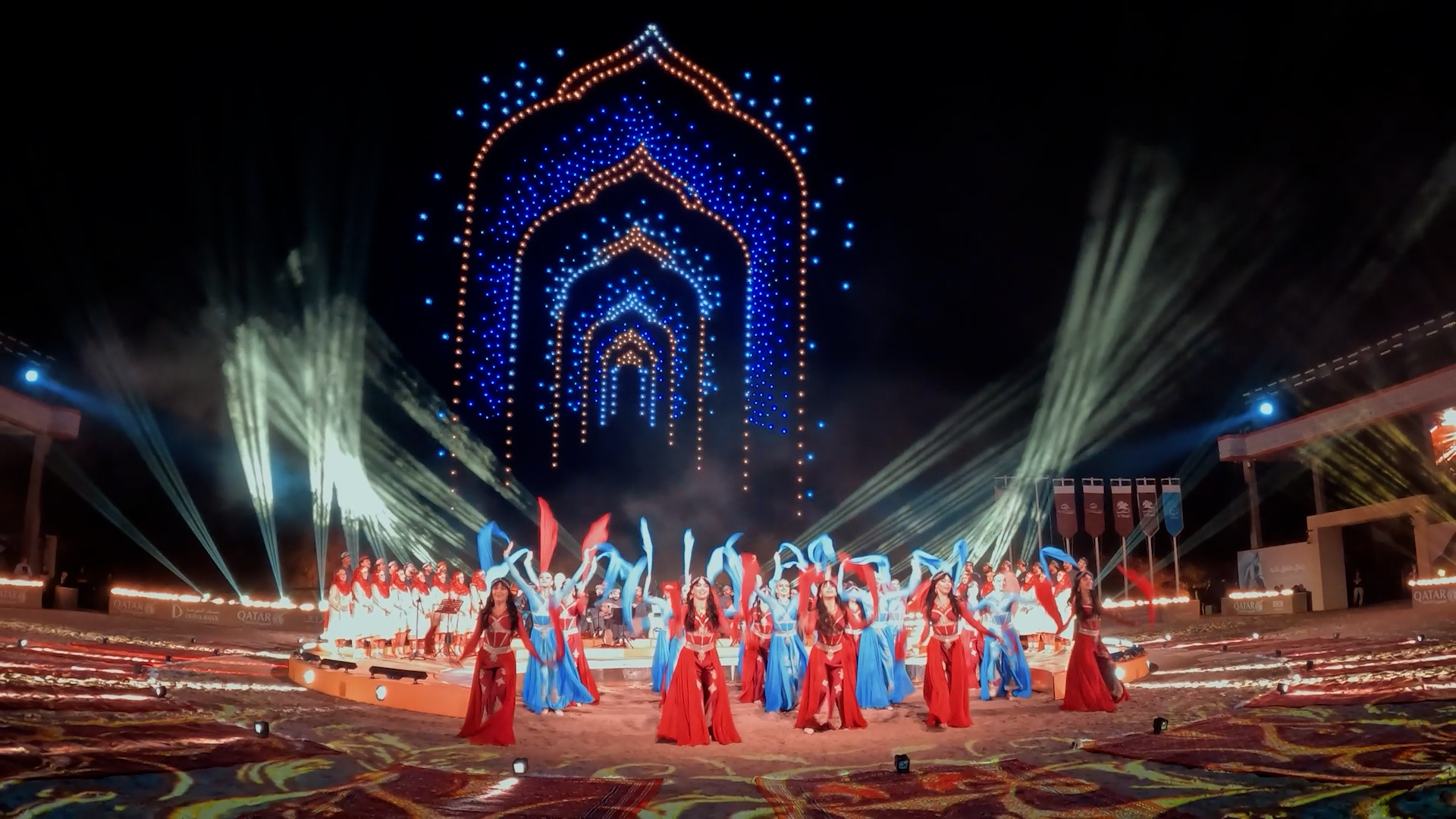
Step 2: Essential Safety Measures for Drone Light Shows
- Pre-Show Planning and Testing
- Meticulous site inspections to identify obstacles, potential interference, and environmental challenges
- Rigorous testing of reliability for every drone, including battery levels, signal stability, and hardware conditions
- Backup drones and redundant control systems to prevent mid-performance failures.
- Real-Time Monitoring During the Show
- Constant sensor tracking to detect any interference or hardware malfunction
- Immediate readiness for emergency landings using return-to-home, soft landing, manual override, or kill-switch protocols
- Establishing strict buffer zones where no spectators or vehicles are allowed.
- Post-Show Procedures
- Controlled, secure landing using a precise sequence
- Flight data analysis for software updates and technical improvements
- Proper recycling of used batteries to meet environmental standards.
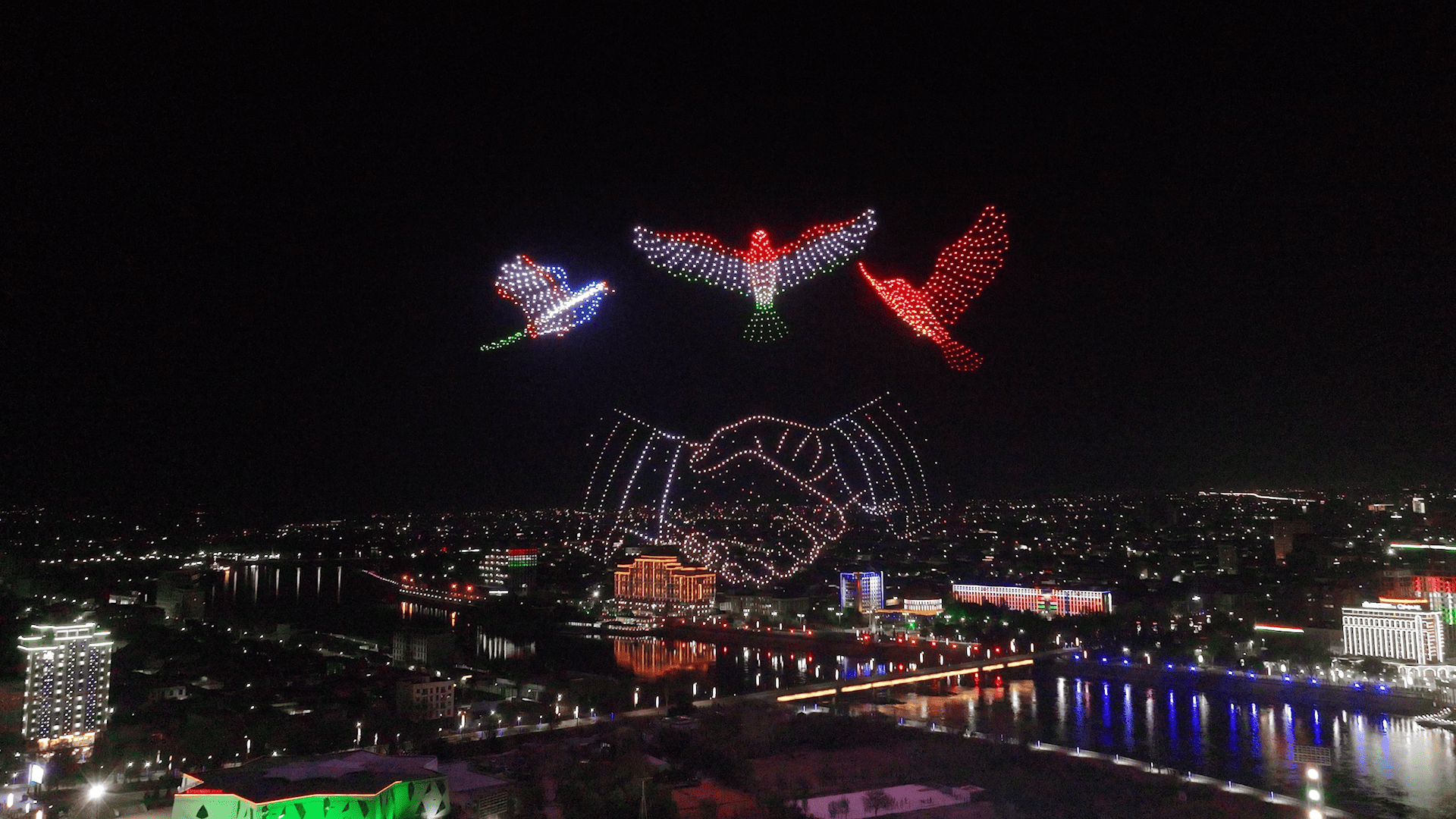
Step 3: Navigating Weather Conditions
Weather can delay or cancel a drone show. What’s more important, it impacts safe operation of drone light shows.
When organizing a drone show safety, we at Lumasky:
- Study weather conditions over a 5-year historical period to predict the forecast on a show day.
- Conduct real-time visual and technical weather monitoring.
- Deploy scouting drones before the launch to assess wind levels and air stability.
- Adjust show duration if wind speeds become a concern.
Weather can quickly change, but Lumasky’s flexible approach ensures safe operation even in challenging conditions.
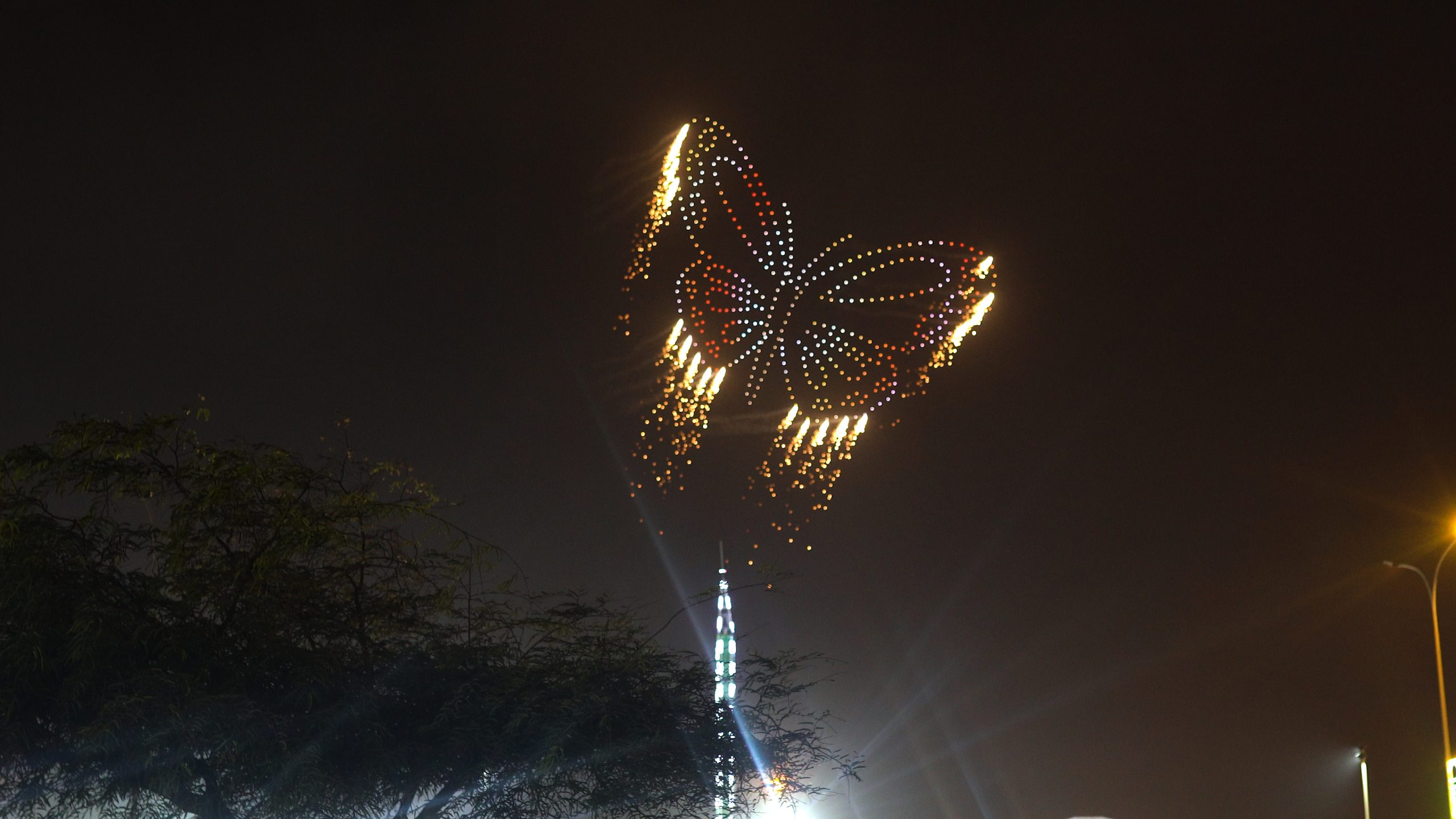
Step 4: Pyrodrone Safety – Managing Fire Risk
Use of pyrodrones in drone light shows adds an extra layer of spectacle, but requires extra contingency plans.
Safe pyrodrone operations mean:
- Pyro-specific drone design with heat-resistant materials is used.
- Pyro drones are equipped and stored separately from the main fleet, and handled by licensed pyrotechnicians only.
- Full fire safety kits and on-site firefighting teams are always present.
- Independent control systems for pyro elements to avoid accidental ignition.
- Pyrodrones operate at a safe distance from other drones and structures.
If used in compliance with safety protocols, pyrodrones operate safer than fireworks, significantly reducing the risk of debris or uncontrolled explosions.
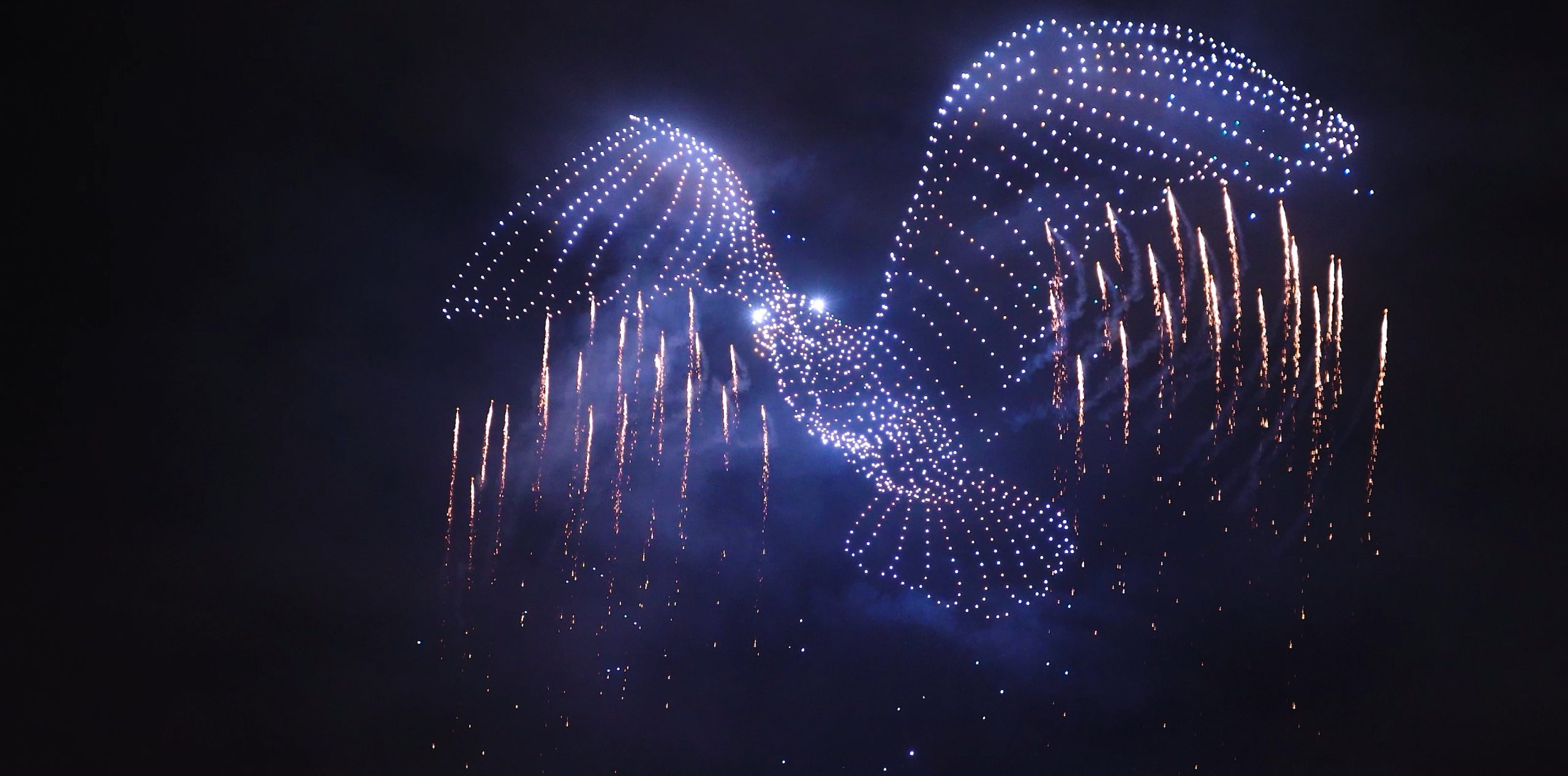
Step 5: Advanced Safety Technologies
At Lumasky, we operate at the forefront of drone light show safety, using drone technology that integrates multi-factor safety systems:
- Geofencing which locks drones inside virtual 3D safety zones.
- Automatic return-to-home triggers based on battery life, signal strength, or interference.
- Manual override via control remotes for pilots to intervene if necessary.
- The newest freeze mode: temporarily halts drone movement to stabilize navigation and safety in emergency cases.
This layered protection makes our drone shows safe. It allows us to deliver successful performances in complex events worldwide.
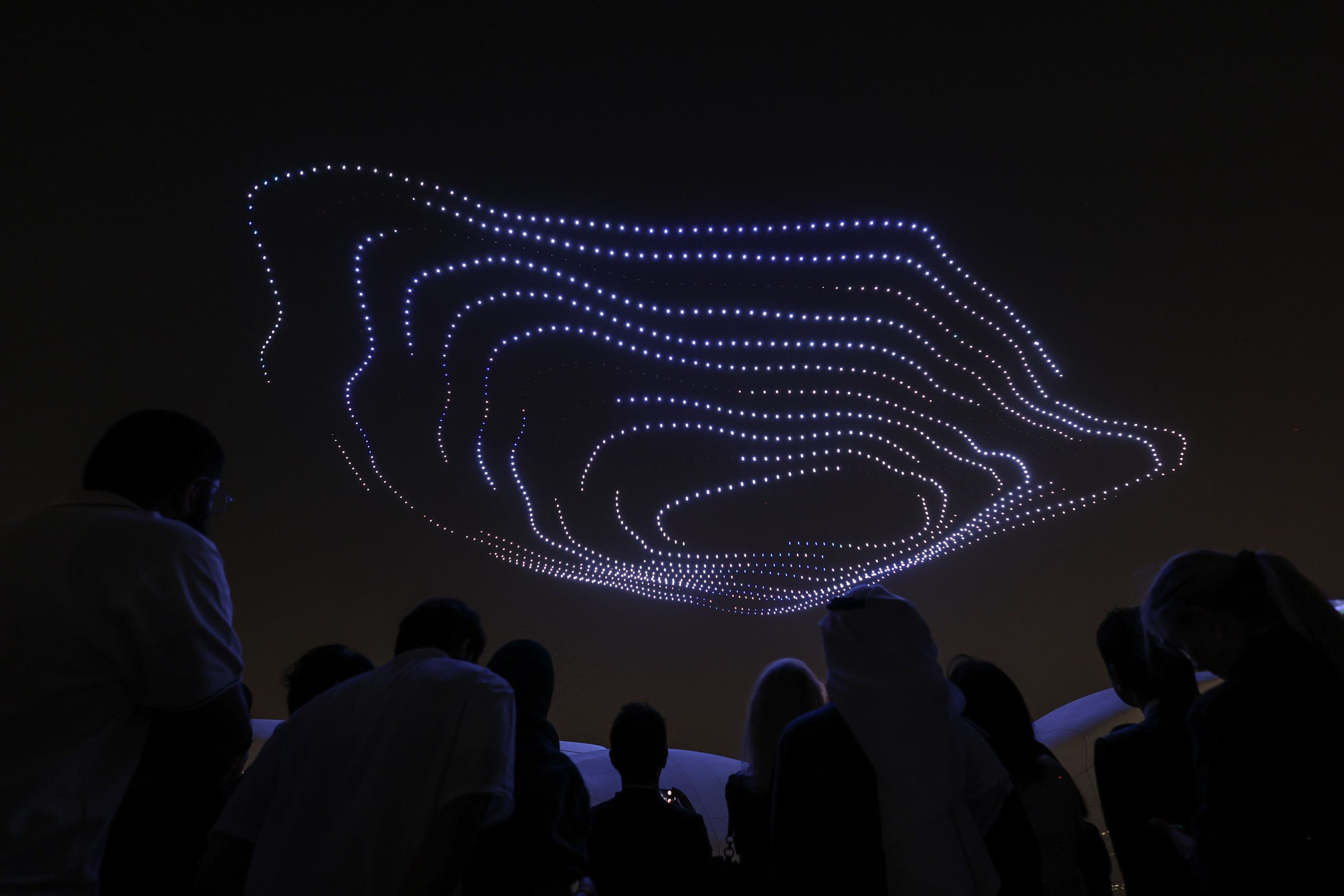
Lumasky: Ambassador of Safety in Drone Shows
Planning a drone show requires deep knowledge of current regulations, strict aviation protocols, and careful preparation. Working with reliable providers means you get a spectacular show without any safety, reputational or financial risks.
At Lumasky, we design and deliver reliable drone performances even in complex locations and challenging conditions. At any entertainment event, every flight meets the highest safety standards with 0 compromises.
To get a free consultation on any show safety question, contact Lumasky before organizing a drone show.
